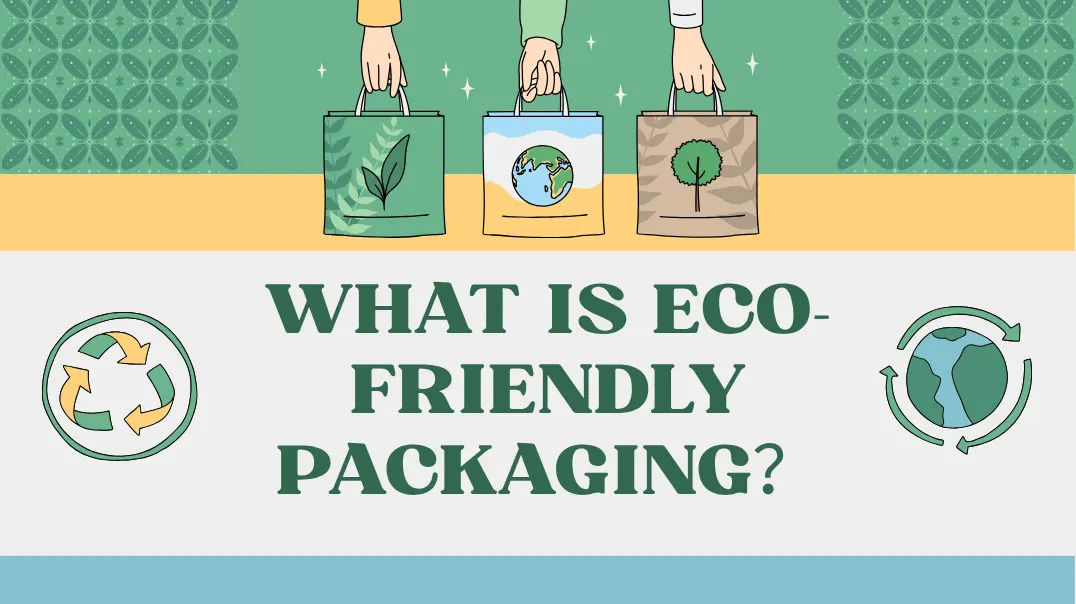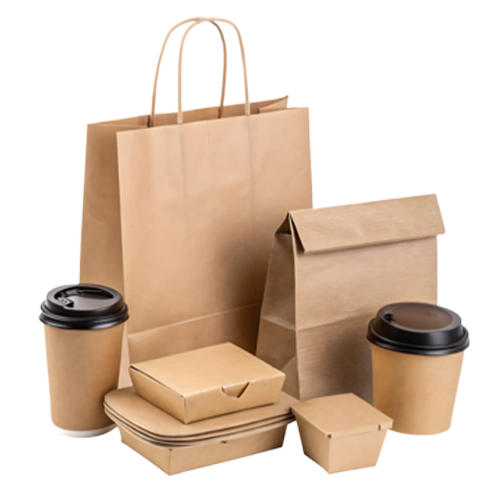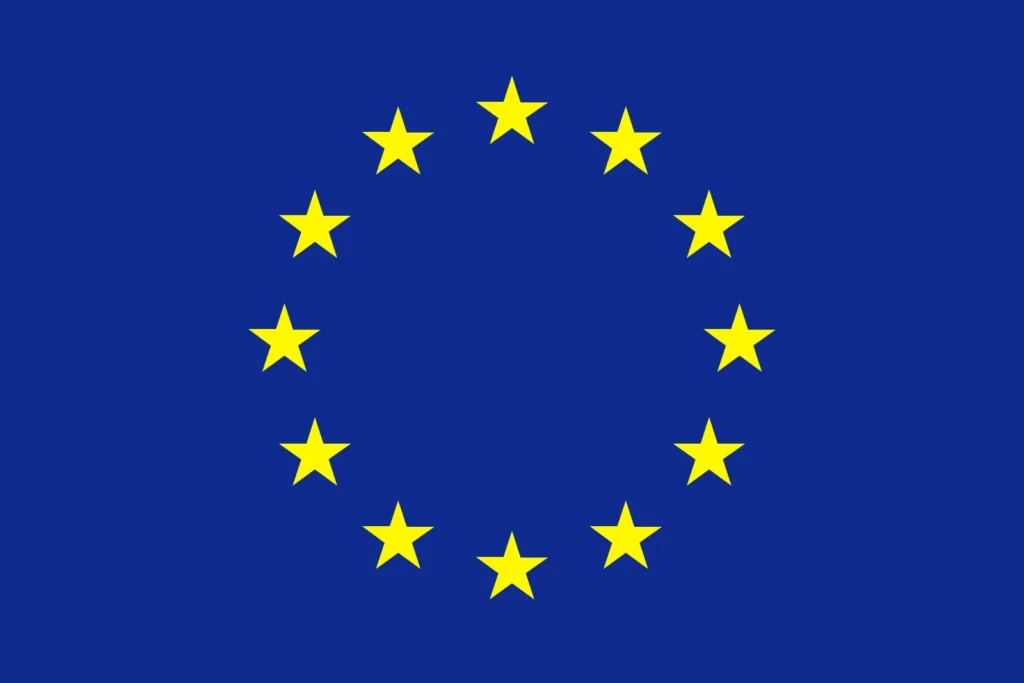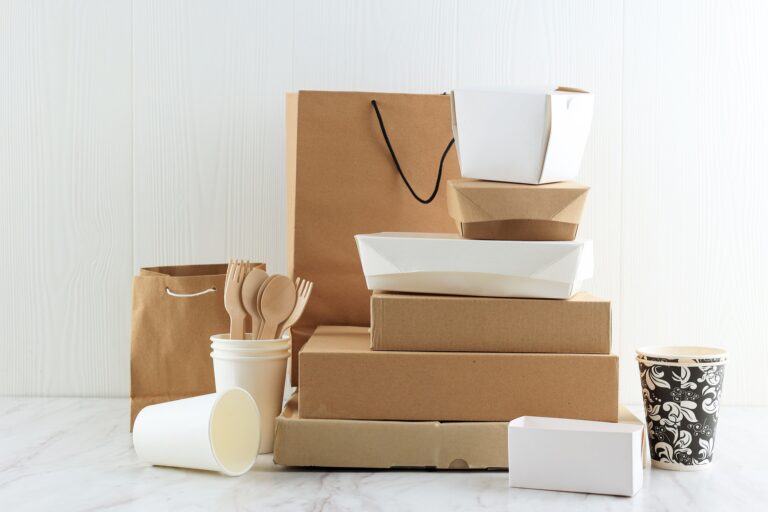Are you wondering why Eco-Friendly Packaging is everywhere these days? Is traditional packaging really harming the planet that much? Are businesses adopting Eco-Friendly Packaging just for branding—or does it actually help reduce environmental damage?
Eco-friendly packaging is a sustainable alternative to conventional packaging that aims to minimize environmental impact. It uses materials that are biodegradable, recyclable, or made from renewable sources, and it’s designed to reduce waste, pollution, and carbon emissions.
If you’re thinking Eco-Friendly Packaging is just a trend, think again—it’s quickly becoming a necessity for businesses that care about sustainability and consumer trust.
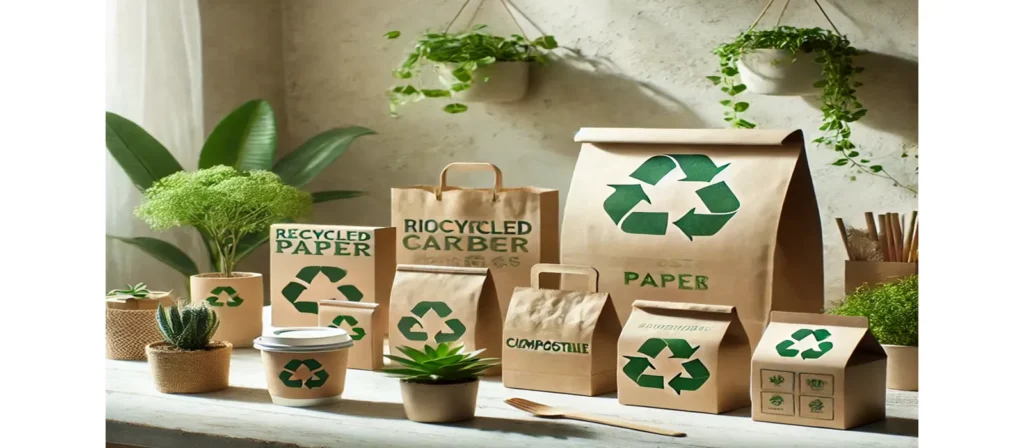
What is Eco-Friendly Packaging?
Eco-friendly packaging refers to materials and methods used to package products in ways that have a minimal impact on the environment. This includes packaging that is recyclable, compostable, reusable, or made from renewable or biodegradable materials. The primary goal is to reduce environmental harm by minimizing pollution, conserving natural resources, and promoting sustainability.
The purpose of eco-friendly packaging extends beyond reducing plastic usage. It includes a comprehensive approach to packaging sustainability: minimizing the material used, choosing non-toxic components, optimizing supply chains, and considering the end-of-life scenario for each package. While traditional packaging may prioritize aesthetics and durability, sustainable alternatives must strike a balance between function, form, and eco-consciousness.
As businesses increasingly respond to global calls for environmental responsibility, eco-friendly packaging has transitioned from niche to necessity. Today, major corporations and small businesses alike are reimagining their packaging strategies—not just to meet regulations, but to align with consumer expectations and corporate sustainability goals.
The Origins of Sustainable Packaging
Sustainable packaging is not a new concept, but its modern interpretation emerged during the environmental movements of the 1960s and 70s. Back then, concern was growing over pollution, deforestation, and the overuse of natural resources. People began to recognize that consumerism, particularly plastic consumption, had long-term impacts on the planet.
Packaging reform gained momentum as scientists highlighted the hazards of single-use plastics and landfilling. Activists pushed for recycling programs, and companies started exploring alternatives to reduce their ecological impact.
Over time, this awareness evolved into tangible actions. The European Union introduced packaging waste directives, while countries like Canada, Germany, and South Korea developed extended producer responsibility (EPR) programs. Corporate giants began setting sustainability targets.
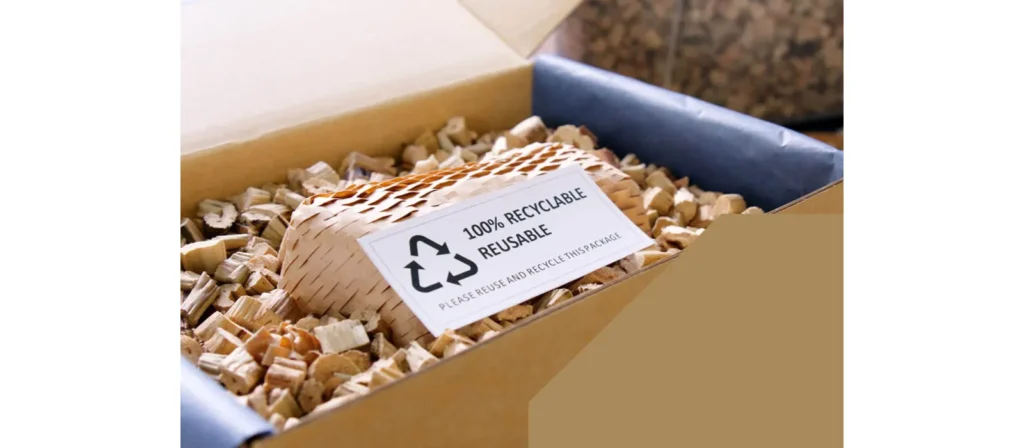
Eco-Friendly Packaging Regulations and Standards
To ensure that eco-friendly packaging claims are credible, a growing number of governments and organizations have introduced standards and certification programs. These systems help regulate material sourcing, manufacturing processes, labeling accuracy, and environmental performance.
Some key standards include:
- FSC Certification (Forest Stewardship Council): Ensures that paper and cardboard materials are sourced from responsibly managed forests.
- USDA Certified Biobased Product: Identifies products derived from plants and renewable materials.
- OK Compost and OK Compost HOME: Issued by TÜV Austria, these certify whether a material is compostable in industrial or home composting conditions.
- ISO 14000 Series: International standards that provide tools for environmental management, including sustainable packaging processes.
- Green Seal and EcoLogo: North American certifications that evaluate environmental claims across multiple criteria.
- The Plastic Pact: Regional and national agreements across multiple countries aiming to eliminate unnecessary plastic and improve recyclability by 2025.
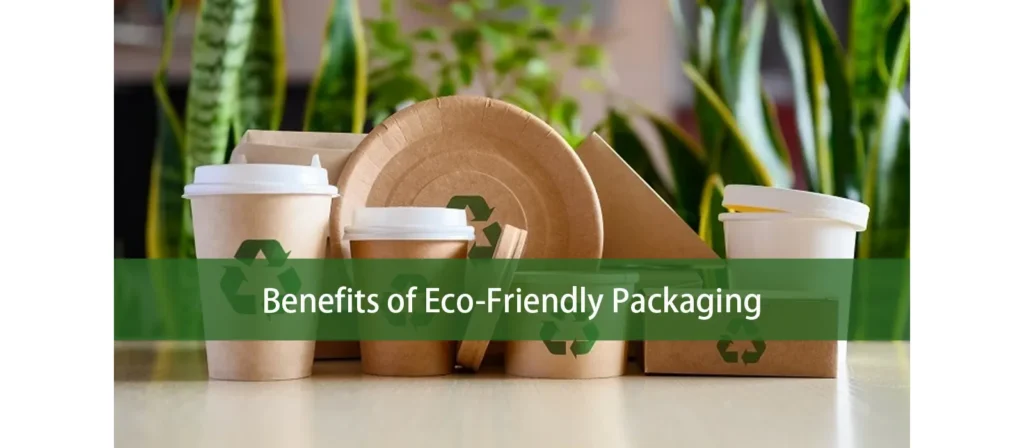
Benefits of Eco-Friendly Packaging
Eco-friendly packaging offers a broad spectrum of advantages for businesses, consumers, and the planet. While the upfront costs can be higher, the long-term gains in terms of environmental preservation, customer loyalty, and operational efficiency are substantial.
1. Environmental Benefits
Eco-friendly packaging materials are often biodegradable, recyclable, or reusable, which means they help reduce the amount of waste that ends up in landfills and oceans. By using renewable resources and minimizing carbon emissions during production and transportation, green packaging actively contributes to the fight against climate change.
- Reduce landfill waste
- Minimize oceanic plastic pollution
- Lower greenhouse gas emissions
- Preserve biodiversity
2. Versatile Use
Eco-friendly packaging materials are surprisingly versatile. From perishable food to delicate electronics, these solutions can be customized for nearly every industry.
Corrugated cardboard can be engineered into strong structural supports, while compostable plastics offer flexibility and durability for takeout containers. Many green packaging solutions also offer temperature resistance and barrier protection.
3. Free of Toxins and Allergens
Conventional packaging often contains dyes, chemicals, or adhesives that can leach into food or personal care products. Eco-friendly packaging, by contrast, tends to avoid such toxins. Plant-based materials, compostable films, and recycled fibers are typically non-allergenic and non-toxic, improving safety for both consumers and ecosystems.
4. Easy Disposal
A major consumer pain point is figuring out how to dispose of packaging. With eco-friendly packaging, disposal is simplified. Recyclable items can go into municipal recycling systems. Compostable packaging can be returned to soil under the right conditions. Some materials are even flushable or designed to dissolve in water.
5. Enhanced Brand Reputation
Eco-conscious packaging is more than a sustainability practice—it’s a brand asset. Today’s consumers actively seek out brands that share their values. Adopting green packaging not only earns customer loyalty but also enhances your image as a responsible and future-forward business.
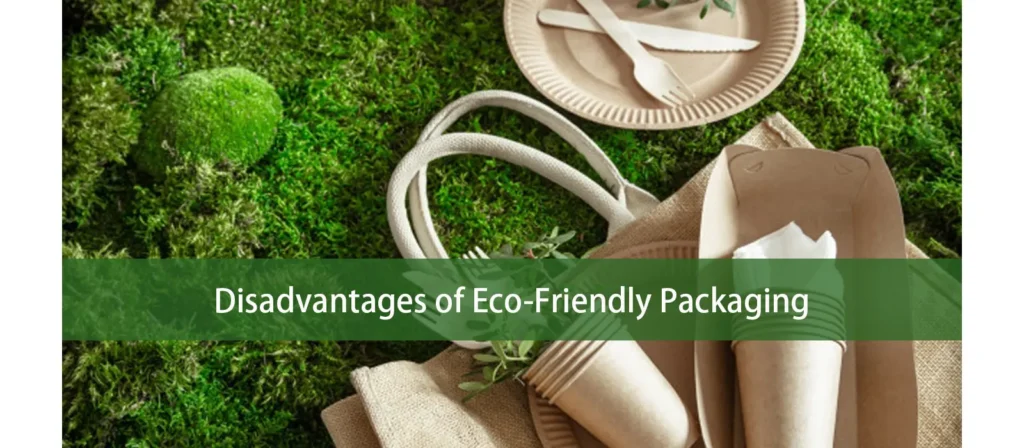
Disadvantages of Eco-Friendly Packaging
Despite its benefits, eco-friendly packaging isn’t without drawbacks. Businesses must navigate several challenges when adopting sustainable solutions:
- Higher Upfront Costs: Biodegradable or recyclable materials can cost more than mass-produced plastic. Small businesses, in particular, may find the transition financially demanding.
- Limited Infrastructure: Compostable or recyclable materials often require specific disposal systems. Not all regions have industrial composting facilities or effective recycling programs.
- Performance Limitations: Some eco-friendly materials are less durable, moisture-resistant, or transparent than plastic. This can affect shelf life and product protection.
- Availability Issues: Sustainable packaging suppliers may face delays or limited stock due to rising demand, impacting supply chains.
- Consumer Misunderstanding: Misinterpretation of labels such as “biodegradable” or “compostable” may lead to improper disposal, undermining sustainability goals.
Despite these challenges, ongoing innovation and economies of scale are gradually overcoming these obstacles. With rising demand, costs are expected to decrease, and infrastructure is improving in many parts of the world.
Types of Eco-Friendly Packaging
Eco-friendly packaging comes in many forms, each suited for different applications and industries. These types are distinguished by their materials, end-of-life options, and impact on the environment.
Biodegradable Packaging:
Biodegradable packaging breaks down naturally by microorganisms into water, carbon dioxide, and biomass. Common materials include PLA (polylactic acid), paper, and cornstarch blends.
Compostable Packaging:
Compostable items decompose into nutrient-rich compost when processed under the right conditions. These must meet strict standards to ensure non-toxicity and full decomposition within a defined time frame.
Recyclable Packaging:
Packaging made from materials that can be collected, processed, and re-manufactured into new products. Cardboard, aluminum, and specific plastics like PET and HDPE are standard examples.
Reusable Packaging:
Designed for multiple uses without losing functionality or safety. Examples include cloth bags, glass jars, and refillable containers.
Plant-Based Packaging:
Made from agricultural byproducts such as cornstarch, sugarcane, bamboo, or mushroom mycelium. These materials are biodegradable and often compostable.

Steps in Designing Eco-Friendly Packaging
Designing sustainable packaging isn’t just about choosing the right material—it involves a comprehensive, multi-step process that considers environmental impact at every stage. Here’s a streamlined outline of the process:
Step 1: Material Selection
Choose materials that are recyclable, biodegradable, compostable, or reusable. Prioritize local sourcing to minimize transportation emissions.
Step 2: Lifecycle Analysis
Assess the environmental impact from raw material extraction to disposal. Tools like LCA (Life Cycle Assessment) help identify the most sustainable options.
Step 3: Minimalism and Design Optimization
Use only what is necessary. Reduce the number of layers and components. Favor mono-materials over complex, mixed-material formats.
Step 4: Include Disposal Instructions
Always tell the customer how to dispose of the package responsibly. Whether it’s composting, recycling, or reusing—it should be clearly marked.
Step 5: Test and Certify
Ensure the packaging is functional, compliant with local regulations, and durable enough to protect the product. Seek certifications like FSC, ASTM, or BPI where applicable.
Eco-Friendly Packaging vs. Traditional Packaging
| Feature | Eco-Friendly Packaging | Traditional Packaging |
|---|---|---|
| Material Source | Renewable, recycled, or plant-based | Fossil fuels, virgin materials |
| Environmental Impact | Low carbon footprint, minimal pollution | High carbon emissions, non-degradable |
| Disposal | Recyclable, compostable, or reusable | Often ends up in landfills or oceans |
| Durability | Varies; can match plastic with innovation | Typically highly durable |
| Cost | Initially higher, but declining | Lower upfront cost |
| Brand Perception | Positive, ethical, modern | Increasingly seen as outdated |
| Consumer Preference | Growing demand, especially among Gen Z and millennials | Declining due to environmental concerns |
| Compliance with Regulations | Aligns with global sustainability standards | Risk of non-compliance in regions with strict laws |
| Design Flexibility | Customizable, minimalistic trends | Versatile but often excessive and non-recyclable |
| End-of-Life Management | Encourages circular economy | Promotes linear consumption (take-make-dispose) |
Which Eco-Friendly Packaging Materials Are Better for the Environment?
Determining which materials are “better” depends on various factors including sourcing, production energy, consumer behavior, and disposal methods. However, based on scientific analysis and environmental metrics, the following materials are among the most beneficial:
Recycled Paper
- Best for: Mailers, boxes, dry goods
- Impact: Low carbon footprint, recyclable, widely accepted
- Limitations: Not waterproof without coating
Bioplastics (PLA, PHA)
- Best for: Food containers, clear wrapping
- Impact: Compostable, renewable source
- Limitations: Requires industrial composting
Mushroom Packaging
- Best for: Fragile items, electronics
- Impact: Fully biodegradable and compostable
- Limitations: Not yet widely available
Glass and Metal
- Best for: Reusable packaging, cosmetics, food
- Impact: 100% recyclable
- Limitations: Heavy, energy-intensive to produce
Bamboo and Plant Fiber
- Best for: Lightweight boxes, trays
- Impact: Fast-growing resource, compostable
- Limitations: Can be costly or fragile depending on thickness
How Eco-Friendly Packaging Influences Consumer Behavior?
The packaging of a product has long been a powerful tool for influencing purchasing decisions, but as environmental awareness grows, it now plays an even more critical role. Eco-friendly packaging has evolved from a niche feature to a major buying factor in global markets.
Consumer Expectations Are Shifting
Sustainable packaging is now seen as a basic standard, not a premium feature. According to several global surveys, over 70% of consumers say they are more likely to purchase products with eco-friendly packaging, even if it comes at a higher price.
This shift is largely fueled by increased media coverage of plastic pollution, climate change, and unethical business practices. Consumers are aware not only of what’s inside the product, but also of the environmental cost of how it’s delivered.
The Role of Labeling and Transparency
Packaging that clearly communicates its sustainability credentials builds trust. Labels indicating “100% recyclable,” “compostable,” or “made from recycled materials” make a significant psychological impact. When consumers understand how to dispose of the packaging correctly, they feel empowered and more likely to choose that brand again.
Transparency is key. Consumers scrutinize brands that make vague or misleading claims. Companies that openly share details about their packaging materials, sourcing, and disposal instructions stand to gain long-term loyalty.
Purchase Decisions Influenced by Social Proof
Sustainable packaging doesn’t just impress individual buyers—it becomes a talking point. Consumers often share their unboxing experiences on social media. Eco-conscious packaging enhances a brand’s image and increases its likelihood of being recommended to others.
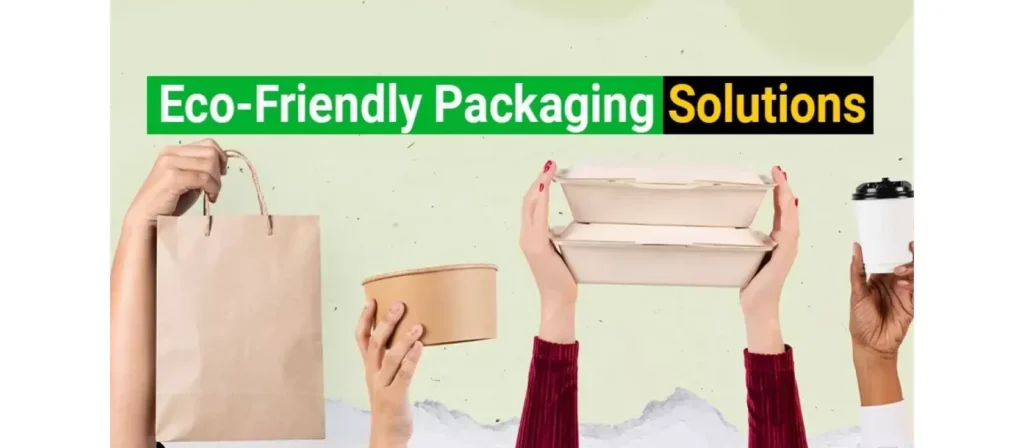
Innovation in Eco-Friendly Packaging Solutions
Technological advancements have redefined what’s possible in the realm of sustainable packaging. No longer limited to brown paper and cardboard, today’s eco-friendly packaging is smarter, stronger, and more adaptable.
Smart Sustainable Packaging
Integrating technology with sustainability, smart packaging includes sensors, QR codes, and NFC tags that help track freshness, educate consumers on disposal, or authenticate the product. This innovation not only reduces waste (especially in food packaging) but also enhances transparency and customer engagement.
Edible Packaging
Packaging that you can eat? Yes. Seaweed, rice paper, and even milk protein (casein) have been transformed into edible wraps. Particularly useful in single-serve food products, this innovation eliminates packaging waste altogether.
Plant-Based and Mycelium Packaging
From cornstarch to mushroom-based materials, bio-derived packaging options are on the rise. Mycelium (the root structure of mushrooms) can be grown into specific shapes and then dried to create compostable protective packaging. Unlike plastic, this material breaks down in weeks and can even enrich soil.
Other innovations include algae-based containers and banana leaf wraps, both of which offer high biodegradability without sacrificing form or function.
Water-Soluble Films
Used in detergents and cleaning products, water-soluble packaging dissolves completely without leaving harmful residues. PVA (polyvinyl alcohol) is a common material here. It’s safe, convenient, and ideal for single-use portions where eliminating waste is crucial.
FAQs
- What is eco-friendly packaging made of?
Eco-friendly packaging is made from materials like recycled paper, cardboard, bioplastics, cornstarch, mushroom fibers, bamboo, and seaweed. - Can eco-friendly packaging replace plastic entirely?
While it may not replace all plastic use immediately, eco-packaging significantly reduces plastic dependency and waste. - What are the best eco-friendly packaging options for food?
Compostable containers, PLA cups, and biodegradable wraps are great for food items. - Are all biodegradable materials compostable?
No, not all biodegradable materials are compostable. Compostable items break down into nutrient-rich soil under specific conditions. - How can I tell if packaging is truly eco-friendly?
Look for certifications (like FSC, USDA BioPreferred), and check the material composition and disposal instructions. - Can eco-friendly packaging be recycled?
Yes, many types are recyclable, though local recycling capabilities may vary. - Can eco-friendly packaging be used for food products?
Yes, many biodegradable and compostable options like PLA and bagasse are food-safe and approved for direct contact. - Is eco-friendly packaging strong enough for shipping?
Yes, many materials like molded pulp, recycled cardboard, and paper tape offer excellent durability for shipping.
Conclusion
Eco-friendly packaging has shifted from a niche concern to a fundamental business strategy. As environmental regulations tighten and consumer demand for sustainable products grows, companies can no longer afford to rely on traditional packaging.
By understanding the various types of eco-friendly packaging, exploring real-world examples, learning how to design effective solutions, and comparing these innovations against traditional methods, brands can make informed decisions that align with both economic and environmental priorities.
While transitioning to sustainable packaging comes with challenges—cost, infrastructure, consumer education—the long-term rewards are undeniable. Lower carbon emissions, stronger brand loyalty, and future-ready compliance all point to a smarter, greener path forward.

